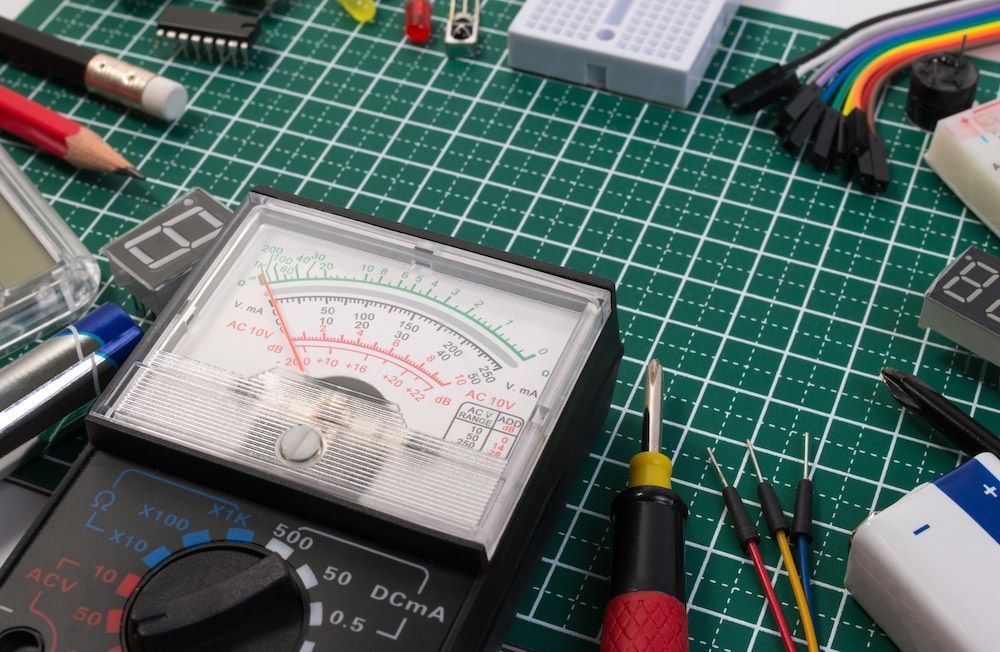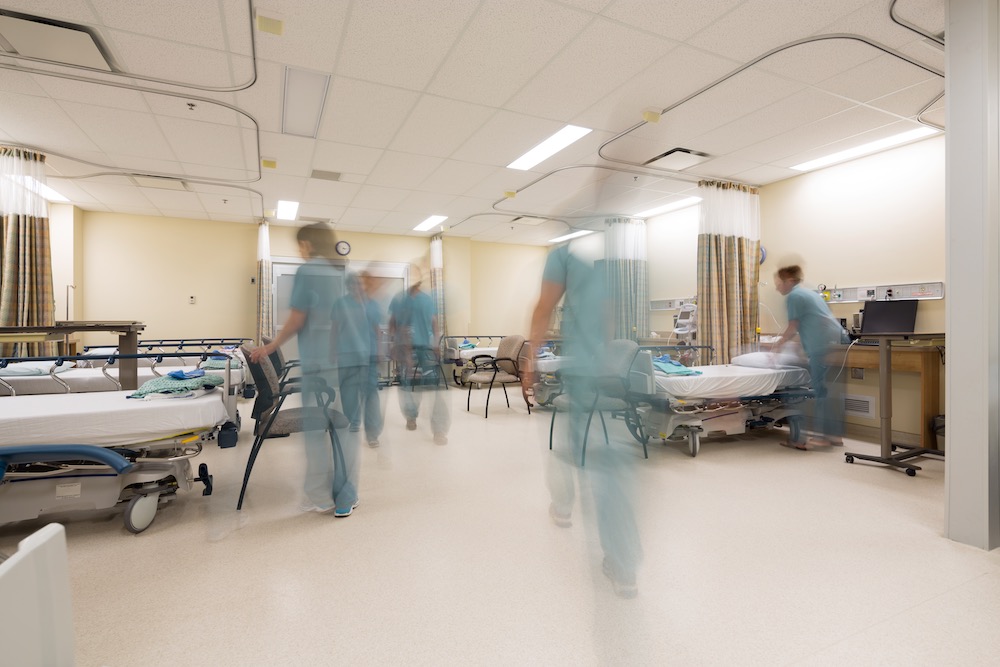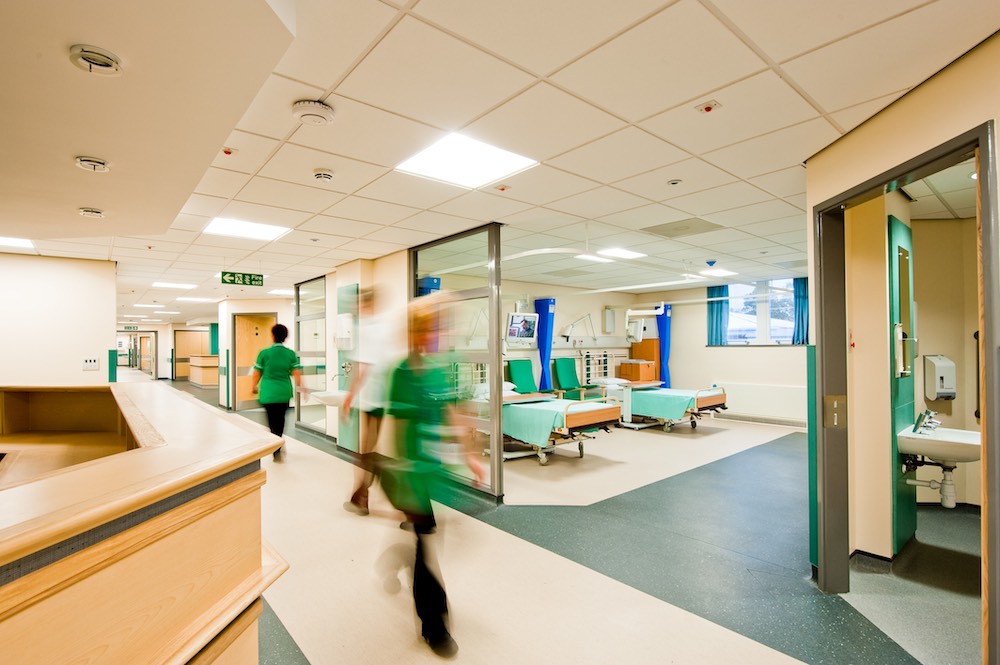Clinical simulation utilization is growing in physical therapy educational programs. A physical therapy (PT) education program aims to equip students with the knowledge and practical skills necessary to be competent and compassionate professionals. While traditional classroom instruction forms the educational foundation, simulated learning experiences offer unique opportunities to enhance learning and maximize outcomes through experiential practice. This HealthySimulation.com article, written by Bini Thomas, PT, DPT, MSA, Ed.D, and Melissa Lazinski, PT, DPT, DHSc, discusses how to set up a comprehensive simulation lab in a PT program. Key components, some considerations, and the steps taken will be highlighted to create a realistic learning space that combines high and low-fidelity elements based on the lessons learned.
Why are Simulation Labs Important in PT Education?
- Real-world Application: Students can apply theoretical concepts in a controlled environment, preparing them for the complex and dynamic scenarios they will encounter in clinical practice.
- Enhanced Critical Thinking: Students develop critical thinking skills as they diagnose, assess, and determine appropriate intervention strategies in realistic situations.
- Safe Learning Environment: Mistakes made during simulations provide learning experiences without risking patient safety, allowing students to build confidence and competence before working with actual patients.
- Interprofessional Collaboration: Simulation can facilitate collaboration between DPT students and other healthcare disciplines, mirroring the interprofessional teamwork crucial in clinical settings.
Key Considerations
The creation of a state-of-the-art clinical simulation lab for PT education is an exciting and vital endeavor that requires careful planning and attention to detail. This article aims to share the lessons learned with others to develop simulation labs and grow the learning opportunities for their students. The key considerations to ensure success are to conduct a needs assessment, develop course objectives and simulation integration into the curriculum, plan a budget, plan for the space available, implementation, evaluation, and revision.
Step 1: Needs Assessment
A needs assessment will help determine your PT program’s specific needs and goals. Consider the types of simulated scenarios and settings you want to offer and the level of realism required. This will inform the space design and equipment needs. Also, consider personnel in this process who can serve on a task force to plan and champion the project. Ideally, the task force faculty would include faculty that intend to use the simulation space.
Step 2: Course Objectives and Curriculum Integration
The goals from the needs assessment can be converted to clearly defined course objectives. Identify how and when simulation will integrate into your curriculum. The task force’s input will be essential to identify the skills and scenarios students will practice through simulation, such as assessments, treatments, patient interactions, emergency scenarios, and decision-making processes.
Step 3: Budget Planning
Create a detailed budget that covers all aspects of set-up costs. Things to consider in creating the space include equipment, technology, and construction costs. It is important to account for staffing needs, training, maintenance, and ongoing operational costs. Investments in technology, such as high-fidelity mannequins, computer software for virtual simulations, video recording equipment, and projectors, can add value to the simulation lab but investigate ongoing costs associated with subscriptions, maintenance, and warranty fees. Also, allocate funds in the budget for unforeseen expenses. Obtain quotes from vendors, be bold, and ask for discounts on products, shipping, delivery, and set-up of large items.
Identify funding available from your department and institution and seek out grants or donors for any remaining balance. Naming rights to an innovative learning space may entice a private donor or organization. Another avenue may be to seek direct donations of used or surplus equipment and materials from local healthcare organizations or vendors.
Step 4: Space Planning
Collaborate with task force members with expertise in the practice setting to design the physical layout of the healthcare simulation lab. Select a suitable space with utilities (electricity, water, Wi-Fi, etc.), tools, equipment, and technology. Obtain the space requirements and dimensions of pieces of equipment from vendors. Alternatively, a web search about the space design of the practice setting can help in deciding the layout. In the design, also consider storage, lighting, and safety measures. Make sure to plan for faculty and students to function in a space that allows easy movement and interaction during PT simulation sessions. This may also include planning for workstations for students to complete documentation. In general, seek to design a space conducive to active learning and easy supervision.
Step 5: Implementation
Our Physical Therapy simulation lab was modeled after a hospital setting but could also simulate a subacute rehab setting. Hospital beds, headwalls with medical gas and suction connections, IV poles (both free standing and attached to the bed), ceiling mounted privacy curtains, bed and patient linens, wall mounted glove and hand sanitizer stations, and patient monitor screens created a realistic inpatient experience for students as they practice skills like getting patients out of bed while managing various lines, leads, and tubes.
In our experience, a mix of high and low-fidelity mannequins and task trainers were purchased that simulate physiological functions during learning activities and practice. Our low-fidelity mannequins are weighted and have articulating joints to allow for the realistic practice of mobilizing a person who requires assistance. These were purchased through a vendor of training equipment for emergency personnel.
In addition, we created a space that simulated an inpatient rehabilitation gym that included wide mats, parallel bars, steps, and exercise weights and bands. This allows our healthcare simulation space to serve a wider variety of courses and needs. Other items for your space include different types of treatment tables and beds, exercise equipment, safe patient-handling devices, gait trainers, and balance trainers.
It helps to have a project manager coordinate construction build-outs, order equipment, receive deliveries, and oversee installations. The project manager must communicate closely with the task force to ensure all needs are met. This person should be highly organized and good at follow-up, as some items will inevitably be back ordered or delayed. Allow for delivery times anywhere from two days to six months or more. As items are delivered or installed, inspect them to ensure that damaged items can be successfully returned and that build-outs meet the lab’s needs.
Step 6: Evaluate and Revise
Once your necessary items are arranged according to plan, walk through and assess for functionality. You may need to modify the original plan. Additional items we are considering include virtual and augmented reality systems for immersive experiences, a motion capture system for real-time feedback on student movements, audiovisual equipment for recording and reviewing PT simulation sessions, and artificial intelligence systems for interactive scenarios. Regularly assess the lab’s effectiveness through student feedback, faculty observations, and assessment outcomes. Use feedback to make improvements to scenarios, equipment, and processes.
Following these steps, you can create a PT simulation lab that enriches your PT student’s education by helping them develop crucial clinical skills, enhance critical thinking, and foster teamwork in a realistic, safe, and controlled environment. A well-designed simulation lab can become the cornerstone of a PT program. As technology and pedagogy evolve, maintaining a commitment to innovation and continuous improvement will ensure that your PT simulation lab remains a valuable component of your program. The American Council of Academic Physical Therapy (ACAPT) has information about simulation use in Physical Therapy education.









